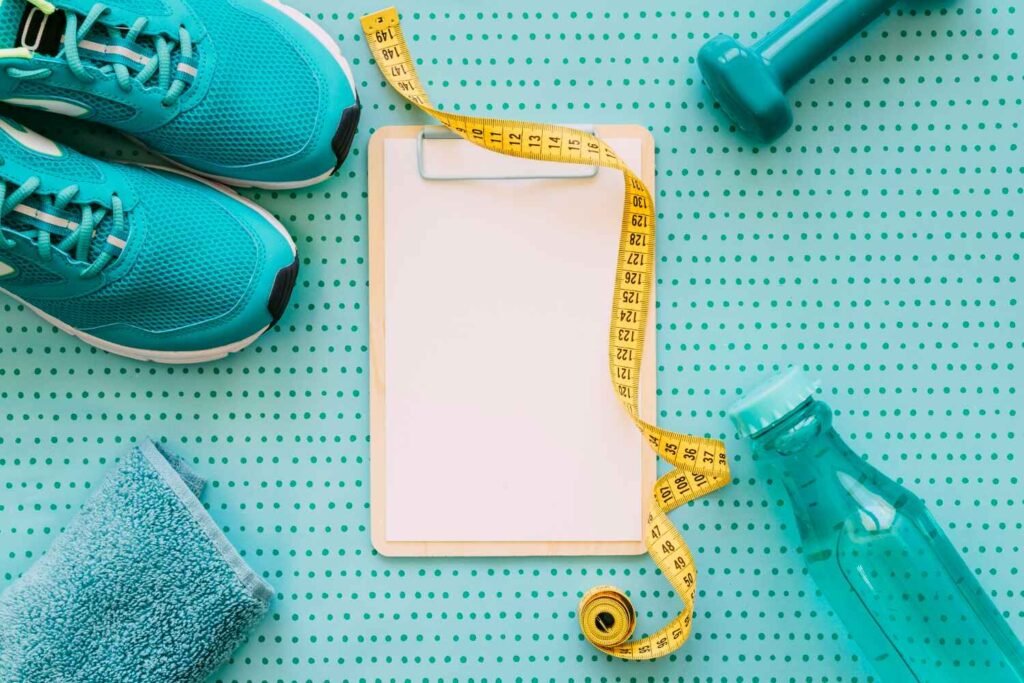
How to Break Through a Weight Loss Plateau
When you begin a weight loss journey, the results often come quickly. The pounds drop off, your clothes feel looser, and you feel fantastic. But then, out of nowhere, everything stops. The scale stays stuck in place, and no matter how hard you try, you just can’t seem to lose those last few pounds. If this sounds familiar, you’ve hit a dreaded weight loss plateau. Don’t worry — it’s normal, and breaking through is possible with the right strategies. In this guide, we’ll cover proven tips and tricks to help you push past a weight loss plateau and get back on track.
What Causes a Weight Loss Plateau?
First, let’s understand what causes a plateau. When you lose weight, your body burns fewer calories because it weighs less. Essentially, the smaller you get, the less energy your body requires to maintain itself. In response, your metabolism slows down, making it harder to continue shedding pounds with the same efforts that worked at the start.
Another factor is adaptive thermogenesis, which is your body’s way of resisting weight loss. When you create a calorie deficit, your body responds by reducing its energy expenditure to preserve fat stores. This is a survival mechanism designed to protect you from starvation, but it can be frustrating when you’re trying to lose weight.
The good news is that by making a few adjustments to your diet, exercise, and lifestyle, you can reignite your metabolism and continue your progress.
1. Reassess Your Calorie Needs
As you lose weight, your body’s calorie needs decrease, meaning that the deficit you once created might no longer be enough to trigger further fat loss. Recalculating your caloric intake based on your current weight, height, and activity level can help you understand whether you need to reduce calories slightly.
However, it’s important not to drastically slash calories. Eating too little can lead to muscle loss and slow your metabolism even further, making weight loss even more challenging. For most people, staying above 1,200 calories per day is crucial to avoid pushing your body into starvation mode.
2. Increase Protein Intake
One of the most effective ways to break through a weight loss plateau is to boost your protein intake. Protein not only helps build and repair muscle but also requires more energy to digest compared to carbs or fats, which helps you burn more calories throughout the day.
Protein also plays a crucial role in preserving muscle mass. When you lose weight, it’s not just fat that you’re shedding; you may also be losing muscle. Since muscle burns more calories at rest than fat, losing muscle can slow your metabolism. By increasing your protein intake, you can help prevent muscle loss and support continued fat loss.
Aim for around 25-30 grams of protein per meal, and include protein-rich snacks like Greek yogurt, eggs, lean meats, and legumes. Not only will this help preserve muscle, but it will also keep you feeling full and satisfied, reducing the temptation to overeat.
3. Change Up Your Workout Routine
Your body is incredibly good at adapting to exercise. If you’ve been doing the same workouts for months, your body has likely become more efficient at completing them, meaning you burn fewer calories. To keep your body guessing and break through your plateau, it’s time to switch up your exercise routine.
- Strength Training: Incorporating weightlifting or resistance training is a fantastic way to build muscle, boost your metabolism, and torch more calories. Muscle is metabolically active, meaning it burns more calories than fat, even at rest. Aim for at least two or three strength-training sessions per week that target all major muscle groups.
- Interval Training: Another great option is high-intensity interval training (HIIT). This type of exercise involves alternating between short bursts of intense activity and periods of lower-intensity recovery. HIIT workouts have been shown to burn more fat in less time than steady-state cardio, making them a powerful tool for breaking through a plateau.
- Increase Intensity or Duration: If you’ve been working out for 30 minutes a day, try increasing it to 45 or 60 minutes. Or, if you typically do moderate-intensity exercises, such as walking, try increasing the intensity with jogging or hill sprints. The more you challenge your body, the more calories you’ll burn.
4. Focus on Whole Foods and Fiber
If you’ve been relying on processed or convenience foods, it might be time to shift toward a diet rich in whole foods. Whole foods like vegetables, fruits, whole grains, lean proteins, and healthy fats are nutrient-dense and provide your body with the fuel it needs to perform at its best.
Additionally, fiber-rich foods can help keep you full and satisfied, preventing overeating. Foods like beans, legumes, leafy greens, and whole grains are packed with fiber, which slows digestion and helps regulate blood sugar levels, reducing cravings for sugary snacks.
5. Hydrate More Effectively
Staying properly hydrated is often overlooked in weight loss but plays a crucial role in your metabolism and hunger regulation. Sometimes, what feels like hunger is actually thirst. Drinking enough water can help prevent unnecessary snacking and promote efficient digestion. Aim for at least eight glasses of water a day, and try drinking a glass before meals to help with portion control.
6. Prioritize Sleep and Stress Management
Both sleep and stress have a profound impact on your ability to lose weight. When you don’t get enough sleep, your body produces more ghrelin (the hunger hormone) and less leptin (the hormone that signals fullness). This imbalance can lead to increased appetite and cravings for high-calorie foods.
Moreover, stress triggers the release of cortisol, a hormone that promotes fat storage, especially around the abdominal area. Finding healthy ways to manage stress, like practicing mindfulness, meditation, or yoga, can help keep cortisol levels in check and support your weight loss goals.
Aim for 7-9 hours of sleep per night and make stress management a daily priority.
7. Monitor Your Portions
Portion sizes can slowly creep up over time, even if you’re sticking to healthy foods. It’s easy to underestimate how much you’re eating, especially when you’re eating out or snacking on the go. To stay on track, consider tracking your food intake using a food diary or an app. This can help you stay mindful of portion sizes and identify any hidden sources of calories that may be contributing to your plateau.
8. Don’t Be Afraid to Eat More (Sometimes)
It might sound counterintuitive, but sometimes eating more can help you break through a plateau. When you’re in a calorie deficit for an extended period, your body can enter starvation mode, slowing down your metabolism to conserve energy.
Incorporating “refeed days” or occasional higher-calorie days can help reset your metabolism and signal to your body that it’s okay to keep burning fat. This doesn’t mean going overboard on junk food, but rather, adding a few hundred calories of healthy, nutrient-dense foods to your day.
9. Celebrate Non-Scale Victories
It’s easy to become fixated on the number on the scale, but remember that weight isn’t the only indicator of progress. Non-scale victories — such as how your clothes fit, improved energy levels, or increased strength — are just as important.
Celebrate these wins, and take the time to acknowledge how far you’ve come. Focusing solely on the scale can lead to frustration, especially during a plateau, so shift your focus to all the positive changes happening in your body and life.
Conclusion
A weight loss plateau can feel like a roadblock, but it’s just a temporary setback. By recalibrating your diet, changing up your workouts, managing stress, and focusing on the bigger picture, you can break through and continue moving toward your goals.
Remember, the journey to better health isn’t a straight line. It’s filled with ups and downs, but each step — even the ones that feel like pauses — is part of your progress. Stay patient, stay persistent, and soon enough, you’ll be back on track, smashing your weight loss goals.
Take Action Now: Ready to break through your plateau? Start by reassessing your calorie needs, making small adjustments to your routine, and staying consistent with your efforts. You’ve already come this far — keep pushing forward!



